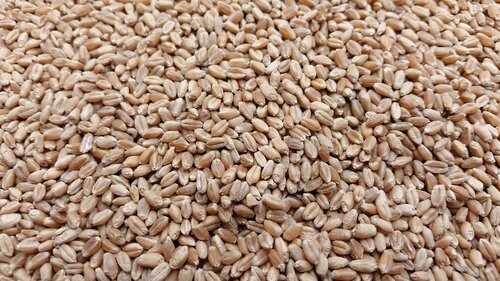Developing Winter Wheat Varieties Adapted to Ontario: A Multi-Disciplinary Approach

This multidisciplinary project is developing new winter wheat germplasm and varieties adapted to Eastern Canada, particularly western Ontario. Their objective is to incorporate enhanced disease resistance, tolerance against yield-limiting abiotic stresses (such as sub zero temperature during the winter and frost heaving caused by freeze and thaw cycles in the spring), higher yield, and improved quality.
The program includes two different breeding pipelines and employs genomic selection technology and DNA marker-assisted selection to accelerate advancement. Genomics is the study of plant genes (the genome). Genomic selection can be used to select for desirable traits, which can shave years off breeding trials by predicting how new lines will perform based on genetic markers.
The project was started by Alireza (Ali) Navabi, who led the University of Guelph wheat breeding program until he passed away in March 2019. While the scope has changed somewhat, this project continues. Helen Booker, who had been leading the flax genetics and breeding program in the Crop Development Center at the University of Saskatchewan, took over stewardship of the program in September 2020.
“We’re focussing on improving yield and yield stability, and that centres around improving disease resistance,” says Booker.
Fusarium head blight (FHB) is a major concern, not only because it causes yield reductions, but it can also contaminate the grain with deoxynivalenol (DON). Booker explains that DON can impact the functional characteristics of grain for end uses (such as making pastry or bread) and can be a human and animal health issue.
Booker says her program is looking at the inheritance of traits to help them breed more efficiently for those traits. They are screening early in development for lines that have alleles (different forms of the same gene) known for resistance to FHB and rusts.
“When we know which fixed lines carry those alleles, we can bring them forward even before it gets to the disease nursery stage,” she says. “Eventually we’ll test them in a nursery, but if we know that information beforehand it improves our selection efficiency for disease resistance.”
Stripe rust is a new disease in Ontario, and Booker says there isn’t much genetic resistance to stripe rust in current varieties, so they’re identifying rust resistance alleles and integrating those into their breeding program as well.
In addition to screening fixed lines, they’ve also started to do their own crosses. Some of their first crosses are now at the registration testing stage. “In a couple of years, we should have material out that comes from crosses initiated at the University of Guelph,” says Booker.
Booker’s team has been working with germplasm they received from Limagrain Cereals. She says the first product to come out of that germplasm source is OAC Constellation. It’s currently being registered for production in Ontario and will be available through SeCan.
It meets all of the agronomic requirements, says Booker, and it’s rated resistant to stripe rust and moderately resistant to FHB.
In 2021, two more lines of soft red winter wheat were supported for registration
-
OAC 19SRW01 is moderately resistant to FHB and leaf rust.
-
OAC 19SRW03 is moderately resistant to FHB and stripe rust.
This Wheat Cluster project received funding from Agriculture and Agri-Food Canada through the AgriScience Program, which is part of the Canadian Agricultural Partnership, a federal, provincial, territorial initiative. This project also received funding from Grain Farmers of Ontario, Producteurs de grains du Quebec, and SeCan.
To read the project profile, CLICK HERE.